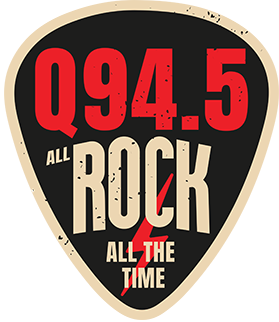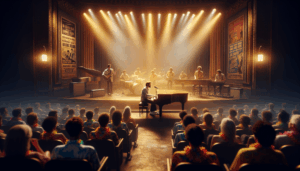On February 5, 1975, Bruce Springsteen and the E Street Band performed what would become one of the defining songs of rock history—Thunder Road—for the first time. But at that moment, the iconic track didn’t even have its famous title. In fact, it was known only as “Wings for Wheels,” a work-in-progress that would undergo significant changes before it became the anthem that fans know and love today.
The setting for this historical performance was the Main Point, a small coffeehouse in Bryn Mawr, Pennsylvania, which Springsteen had visited numerous times since 1973. The intimate venue was the perfect backdrop for the young artist, who was gearing up for the release of Born to Run, even though he had yet to officially begin recording the album.
A Work-in-Progress with Big Ambitions
The benefit concert, which was broadcast over WMMR radio in Philadelphia, became one of Springsteen’s most famous early performances. At the time, Springsteen was testing out several new songs, and this set gave listeners a glimpse at the creative process in its rawest form.
Though he had already written the monumental song Born to Run, he was still ironing out the details of the tracks that would form his soon-to-be-released album. Thunder Road—then titled “Wings for Wheels”—was part of this early material, but its lyrics and arrangement were still evolving. The song was far from the finished product, but its energy and the escapist theme that would come to define it were already taking shape.
From ‘Wings for Wheels’ to ‘Thunder Road’
One of the key elements that would set Thunder Road apart was its title, which Springsteen would later reveal was inspired by a 1958 Robert Mitchum movie about bootleggers. Interestingly, he never actually saw the film, only the poster in the theater lobby. As Springsteen himself explained in later performances, the evocative title captured the essence of the song much better than “Wings for Wheels.”
While the melody was solid from the start, many of the verses were rewritten before the final version was recorded, including a change in the name of the girl from “Angelina” to the simpler “Mary.” The instrumental break also underwent a significant transformation, eventually taking on the stately tone that would make the song unforgettable.
Early Springsteen: A Glimpse into the Future
That night wasn’t just about Thunder Road. Other songs like Jungleland and She’s the One were still in their embryonic stages and would later undergo major transformations. Jungleland, for instance, would be reworked with Clarence Clemons’ legendary saxophone solo replacing an early guitar-violin duet. Meanwhile, “A Love So Fine” would eventually become “So Young and in Love,” a track released in the 1998 Tracks box set.
The concert also included standout performances of Springsteen’s early material, from a piano-and-violin version of Incident on 57th Street to a powerful rendition of It’s Hard to Be a Saint in the City. The night even included covers of songs by Johnny Rivers, Bob Dylan, and Chuck Berry, making it a true celebration of rock ‘n’ roll history.
A Pivotal Moment for Springsteen’s Career
Looking back, that February 5th performance was a turning point for Bruce Springsteen. It marked the moment that Thunder Road was born, with its iconic lyrics and melodies solidifying its place in rock music history. This performance—full of raw energy and future greatness—was a glimpse into the unstoppable rise of one of the greatest rock stars of all time. Little did the audience know, they were witnessing the creation of an enduring anthem that would resonate for generations.





